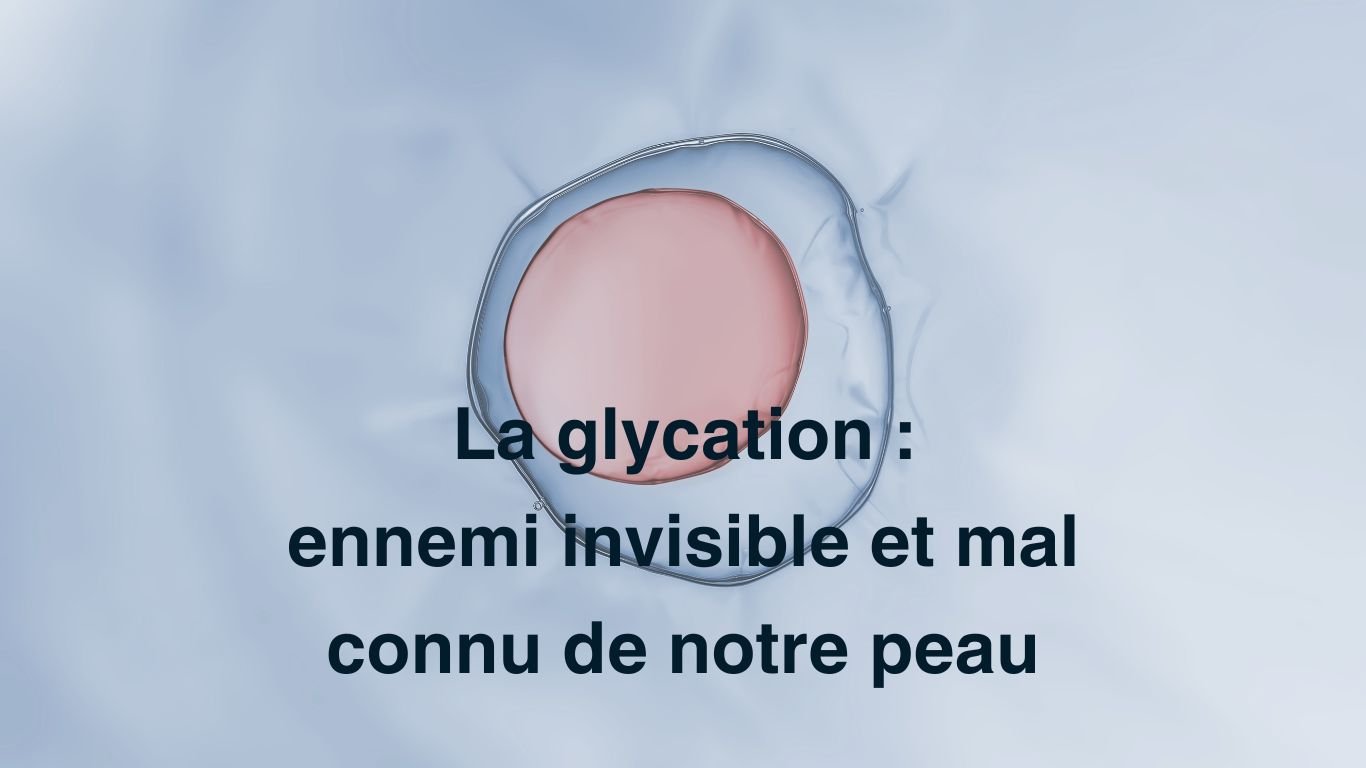From the heat of the sun to the softness of certain tanning oils, your skin has tastes all its own. Unfortunately, the abuse of UV rays and the chronic use of certain skin products can have particularly worrying consequences for one's health.
Burns and dry skin are the most common, but repeated trauma to your skin can go much further.
Indeed, for those who suffer from dermatitis, psoriasis or other skin diseases, protecting their skin from the sun's rays, atmospheric pollution and cheap creams is necessary to avoid having to face a episode".
But these environmental factors in direct contact with your skin are not the only dangers threatening its integrity.
Quality of sleep, your level of demand (stress) and nutritional balance (quantitative and qualitative) play a complex and increasingly obvious role in the triggering of diseases.
What does science say today about how you can take care of your skin? When to seek advice from your doctor? Is it possible to protect yourself from certain skin disorders?
 Skin disorders: what do they look like? How to detect them? How to explain them?
Skin disorders: what do they look like? How to detect them? How to explain them?
From itching to redness, skin lesions are usually nothing to worry about. However, some benign appearances can be a sign of a real problem. Furthermore, certain symptoms are difficult to differentiate and sometimes, it is ultimately a completely different condition that a skin is diagnosed with.
So, not only are our skins regularly put to the test, but even more disturbing: finding the right treatment is actually more difficult than many people think.
It is through studies such as that carried out in 2021¹ by the team of researcher Panpan Liu that we find confirmation of the leads laid out by Doctor Michael W Piepkorn in his 2019 research² : certain health conditions skin are commonly subject to significant misdiagnosis.
The problems of interest to Liu are also of particular importance for Europeans since his object of study turns out to be the diagnosis of melanocytic lesions.
These skin conditions have a particularly high incidence in Europe and Switzerland where residents hold a sad record, particularly in Geneva.
These were in fact the subject of a publication in the Swiss Medical Review in 2007, through the work of researcher Talph P. Braun ³ .
From melanocytic nevus (mole) to cancer: diagnose to reduce the risks to your skin health
If the prevention of skin problems is largely based on controlling the factors that can trigger them, there is an essential monitoring component.
Indeed, it is important to keep an eye on your skin through careful and regular examination of its surface.
As Braun explains in his 2007 article entitled “Surveillance of melanocytic lesions”, the identification of melanomas is fortunately now being done earlier thanks to a systematic screening policy and using suitable examination techniques.
Early detection is almost vital as it is only in the early stages of the disease that it is possible to prevent significant development of cancer and therefore improve life expectancy.
The recent success of the medical profession in its fight against the spread of malignant skin lesions was not easy to predict given that:
- A naked eye examination does not easily differentiate a melanocytic nevus (benign) from a melanoma for which it is necessary to resort to dermoscopy (microscopic dermatological study using a magnifying glass with illuminated magnification);
- Dermoscopy alone does not allow the diagnosis to be made either since the ABCDE criteria (Asymmetry of the lesion, Irregular border, Multiple colors, Diameter greater than 6 mm, Significant evolution) are generally not yet achieved for a early stage melanoma. In other words, melanoma is initially no larger and no more pigmented than a freckle or benign melanocytic nevus.
For these reasons, suspicious spots on the surface of your skin should be carefully examined by an experienced dermatologist as soon as they appear.
This element is one of the cornerstones of an effective health routine as you age.
When to ask your doctor for an examination?
It is not always necessary to be alarmed at the appearance of a new colored area, especially because it is normal to see lentigo – brown spots – emerge as part of the aging process.
It is therefore necessary to define what is meant by “suspicious stain”.
Generally speaking, two key criteria govern the decision whether or not to contact your dermatologist:
- The evolution of a spot without noticeable change in your environment (ephelides, for example, or “freckles”, are not likely to significantly change in appearance without exposure to the sun or extreme cold);
- The rapid appearance (a few days) on the surface of your skin of an irregularity combining at least two of the following three criteria: increase in volume, change in color, modification in texture.
However, a routine visit to your doctor will be an opportunity to monitor the evolution of potentially malignant lesions not detectable to the naked eye by you.
Preventing skin disorders naturally: proven methods
If scientific research continues to advance human genius, proven methods of prevention remain those which prevail both in terms of results and respect for your health in the long term.
Sleep, stress, sport and diet: the 4 pillars of truly effective prevention
While waiting for more effective tools to treat skin problems at the root, the most effective remains to take care of your skin by controlling the key factors of its health.
Indeed, much more than genetics, it is epigenetics which today seems to attract the attention of practitioners. In this regard, we now understand that the triggering of many diseases (particularly skin diseases) depends on factors whose presence activates the corresponding genes.
So, whether you are concerned about the potential appearance of a melanocytic nevus, psoriasis or dermatitis, keep in mind that preventing your skin problems starts with good hygiene. of life.
This means that you ideally need:
- Protect your skin from UV rays with a sunscreen adapted to your needs before any exposure;
- Nourish it to prevent it from being too dry by providing it with fatty substances through a cream corresponding to your skin type;
- Clean it carefully and systematically after prolonged exposure to compounds that could cause it to react (make-up, cigarette smoke, rainwater in regions known for their atmospheric pollution, etc.).
However, on a daily basis, you will also, of course, need to observe 4 essential points to maintain your skin health:
- Have the amount of sleep your skin needs to activate its daily regeneration processes;
- Regulate your stress level in order to limit the risks of hormonal and immune disorders that can impact the metabolic processes of your skin (very important to prevent the appearance of dermatitis, psoriasis and even the evolution of your skin type towards excessively oily skin sebum);
- Practice daily physical exercise to the extent that the mechanical stresses on your skin will allow it to more easily maintain its firmness and flexibility (in addition to the role that sport has in eliminating toxins from your skin and in activating the cell regeneration process);
- A balanced diet (quantitatively and qualitatively) so that your skin can have the raw material it needs to rebuild itself daily and maintain itself.
Diet is an often forgotten element of a suitable skincare routine. Remember in this regard that your potential vitamin C deficiencies (to name just one) are likely to weaken your skin. Indeed, certain vitamins and certain trace elements from your diet play a fundamental role in the effectiveness of your antioxidant protection mechanisms.
The proper functioning of these mechanisms is essential since without them, oxidative stress would contribute to premature aging of your skin.
Practical tips to nourish your skin's healthy routine
However, beyond these commonplaces, a few daily tips will allow you to take better care of your skin.
The ideal remains:
- Protect your skin from external aggressors (using a suitable sunscreen systematically before each exposure and removing makeup thoroughly without irritating the skin are the keys to preserving optimal skin health);
- Develop a skin health routine that suits you (choose a cleanser adapted to your skin, systematically apply a cream after showering to avoid dehydration, use thermal water when you get up and go to bed to cleanse your skin);
- Exfoliate regularly but not too often (mature skin finds it more and more difficult to get rid of dead cells; without exfoliation, topical application products therefore penetrate poorly. Prefer exfoliants based on fruit acids by massaging gently once or twice a week);
- Avoid exposure to blue lights (that emitted by screen LEDs has the effect of destroying collagen prematurely and contributing to the appearance of hyper-pigmentation);
- Massage your skin regularly (upward movements have a natural lifting effect).
Ready to start a new skin life? Don't hesitate to read the other articles on our blog to learn more about how you can take care of your skin at any age.
- Study by Panpan Liu's team: https://www.ncbi.nlm.nih.gov/pmc/articles/PMC8383488/
- Work by Michael W Piepkorn: https://pubmed.ncbi.nlm.nih.gov/31603483/
- Publication of the article by Ralph P. Braun: https://www.revmed.ch/revue-medicale-suisse/2007/revue-medicale-suisse-109/surveillance-des-lesions-melanocytaires





Share:
MYCOLLAGENLIFT AWARDED AT THE 2022/2023 BEAUTY VICTORY
What recipes to fight against skin aging?